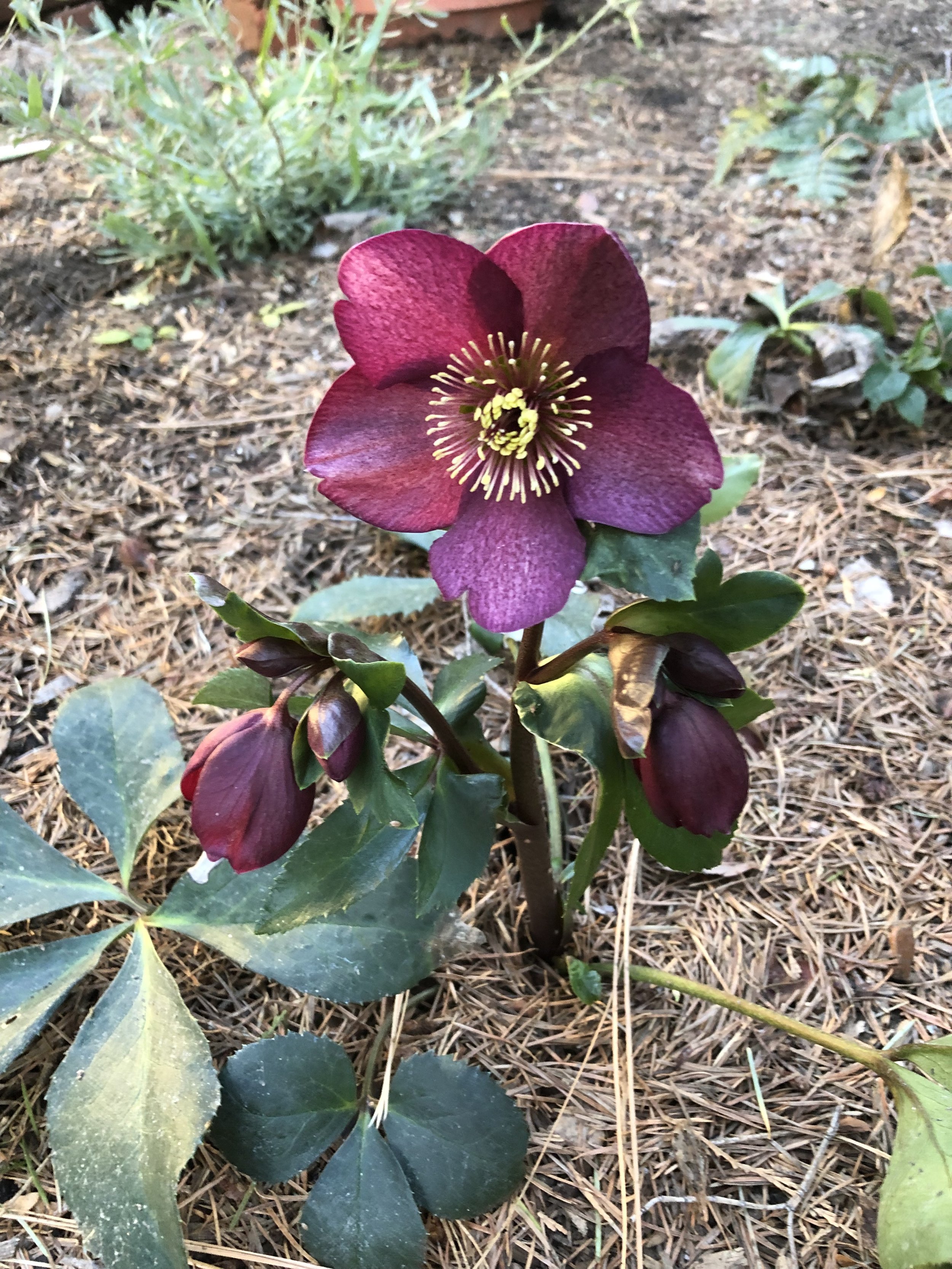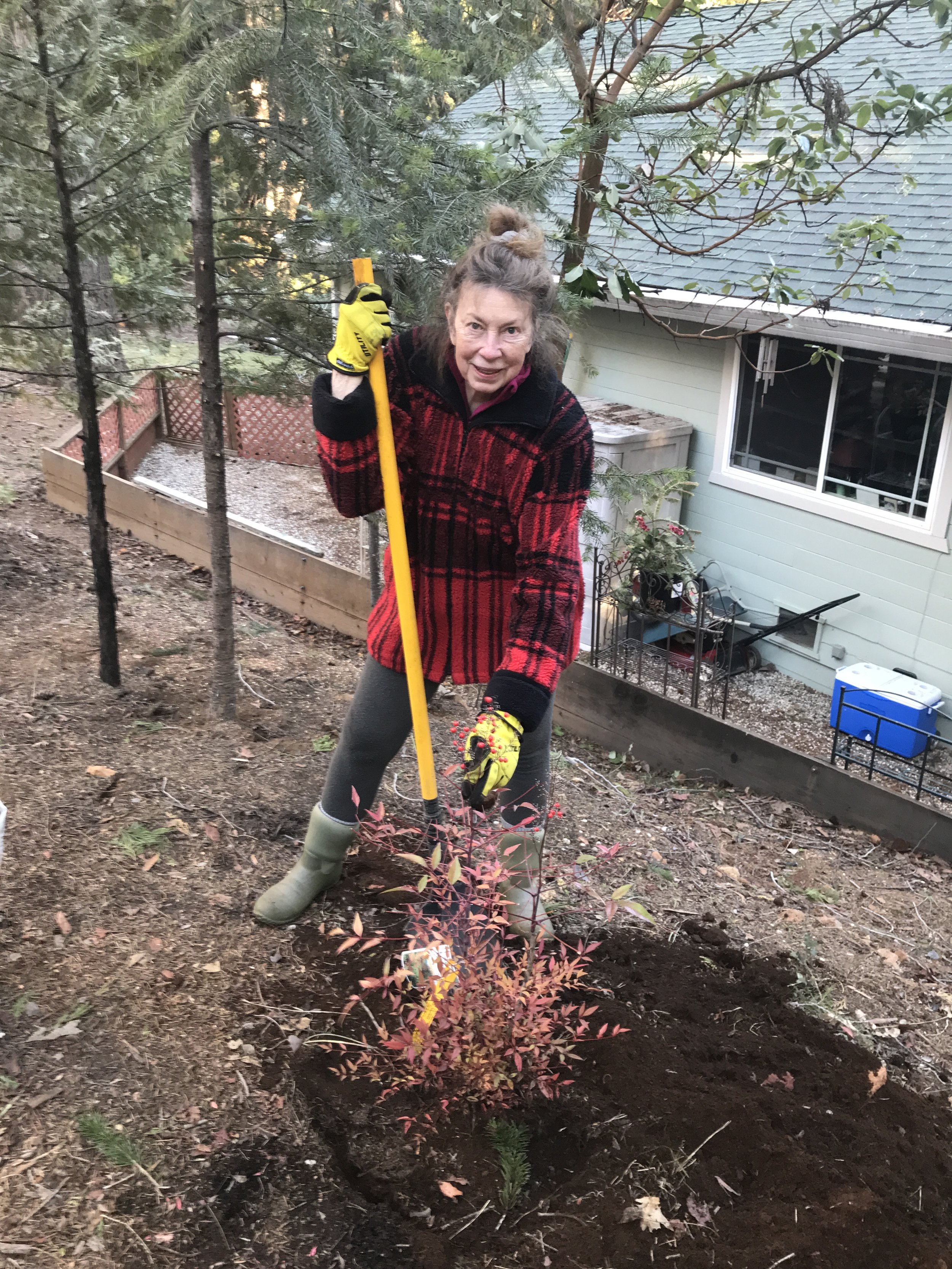Afoot in a January Garden
Gardens take root in the imagination. Some are simple, contained in pots conveniently arranged on a porch. Others are over the moon. Whatever the size and scale, it’s never too early during the winter months to begin planning and preparations for a spring garden. Lately, there’s been little else on my mind. When two weeks of June-like sunny days paid a welcome visit to the Sierra Foothills late this January, I simply could no longer resist the urge to begin readying our gardens and pathways for spring.
Late December into early January, a monumental snow event not experienced in Nevada County since 1990 brought outdoor activities to a standstill. With trees and power poles down across the county, Kit and I lived off the grid for ten days—dependent on heat from our gas fireplace and kitchen stove, power from a small generator, and the kindness of wonderful neighbors who helped shovel and plow our driveway. With no way to safely drive or even walk the icy roads, we did what nature does in winter. We hibernated near our fireplace, slowed our pace down to a minimum, and patiently waited out the storm. When mail deliveries finally became possible along our road, the White Flower Farm Spring 2022 Garden Book arrived and immediately began perusing its gorgeous pages.
Before long, I stopped at Helleborus and read the names and descriptions of the catalogue’s colorful hellebore varieties and collections. Hellebores are described as “aristocrats of the woodland garden that are native to Europe and western Asia.” In Missouri, they were known as Lenten Roses that like clockwork flowered religiously in our shade garden just before Easter. Here in the Sierra Foothills where I planted three hellebore in a partially shaded raised redwood bed last summer, they are known as Christmas Roses. Just as the White Flower Farm catalogue notes, “They bloom in early winter in mild climates and in late winter or early spring where the soil freezes hard.”
When a mountain of snow that had completely covered our raised flower bed finally melted, the hellebore did not disappoint. Through the center of its year-round, dark green leaf cluster, burgundy-colored Hellebore roses were standing tall in the warm afternoon sunlight. By the final week of January, it felt as if spring was about to explode onto the scene at any minute. Not for another day could my inner gardener ignore the signs of spring’s urgent arrival. I began to make a mental list of tasks to be undertaken while warm January temperature trick the mind into thinking it is spring. And finally, I was afoot in the garden with rake, trowel, and shovel in hand.
I divided my tasks like slices of a pie and undertook them one segment at a time. First, a “Julia Child” butter yellow rose bush and a pink rose called “Passionate Kisses” were cut way back. A third bush—an apricot-colored grandiflora rose named “About Face” that lived in a large ceramic pot on the deck throughout the fall was finally planted and cut back. Here and there in the flowerbed, I found evidence of peonies, lavender, thyme, and ferns just under the soil. Nearby, established camelia, azalea and rhododendron bushes that over time had begun to spill down a slope were staked to take better advantage of afternoon sunlight and provide a backdrop for the new raised flowerbed.
My next task was to rake a pathway lined with pine and fir trees visible just upslope from the backyard of the house. Ignored for much of the past nine months since our April arrival, I’m keen to have it become a quiet walking path once branch litter is raked away and dead lower branches have been pruned. A few months ago, when the Sierra Foothills Iris Society had a two-day sale at Weiss’s Nursery of heritage irises from the gardens of their members, I bought a selection of iris tubers but had yet to figure out where to plant them when winter arrived and snow buried the gardens and paths around us.
I’ve now raked a pathway delineated by a bed of pine needles and planted iris tubers just above the surface at the base of trees at the edge of the path. Kit helped plant a lovely nandina bush with red berries to add color to the pathway in winter. I’m now envisioning a lovely sculpture as a yard art installation and a bench for meditation as this pathway leading to our back woods emerges over the final months of winter.
Gardening is a bit like writing. Lost in the task at hand, the mind wanders about, grabbing hold of thoughts that float like aerie dandelion seeds set sail by a passing breeze. As February gets underway, I will continue to make a mental inventory of gardening chores that are still not done.
And I will nurture and maintain the gardens planted last summer. And all the while, my thoughts will follow other passions—writing, cooking, and painting—that are pulling at me these days.
Gardening is a meditation. When I come in from the garden, I am often aching and smelling of dirt. As writer Margaret Atwood once noted on spring gardening, “that is precisely as it should be.”



